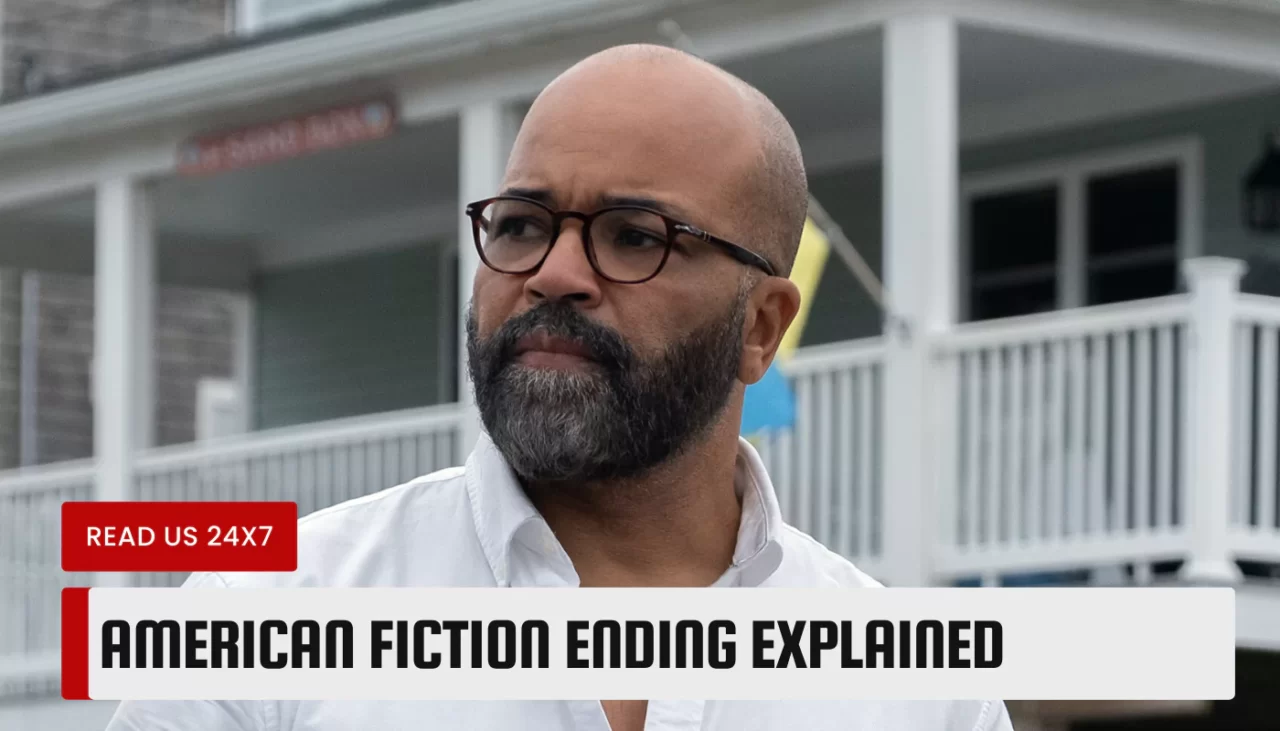The ending of “American Fiction,” Cord Jefferson’s satirical film, has sparked controversy and left audiences grappling with uncomfortable truths about racial representation in entertainment. To understand the final scene’s significance, we must first delve into the film’s core themes and navigate its unique narrative structure.
American Fiction: A Satirical Look at Race and Representation
Plot Summary: Renowned Black novelist Andre “Monk” Braithwaite (played by Jeffrey Wright) faces pressure to write a commercially successful novel. Frustrated by the industry’s focus on stereotypical narratives, Monk creates a wildly offensive manuscript under a pen name, satirizing the tropes he despises. To his surprise, the book, “My Pafology,” becomes a sensation, embraced by the very audience he intended to critique.
Multiple Endings: Jefferson deliberately offers two endings, both playing on the irony of Monk’s situation. In the theatrical release, Monk drives away from the movie set, conflicted about his success built on perpetuating harmful stereotypes. An alternate ending portrays Monk accepting an award for “My Pafology,” only to be shot by the FBI who mistake his trophy for a gun. Both endings leave the audience with a sense of unease and prompt crucial questions about artistic integrity and responsibility.
The Meaning of the Final Scene:
Monk’s Character Development: The final scene, whichever version you choose, showcases Monk’s internal struggle. He experiences both a hollow sense of validation and a gnawing guilt over his actions. This complex conflict reflects the film’s exploration of artistic compromise and the consequences of exploiting stereotypes for personal gain.
Commentary on American Perceptions of Race: “American Fiction” challenges viewers to examine their own biases and complicity in upholding harmful narratives. The film satirizes the white obsession with consuming Black stories that reinforce pre-existing notions of trauma and criminality. By highlighting the disconnect between Monk’s intentions and the mainstream’s interpretation, the film compels us to confront our own prejudices and the power dynamics within the entertainment industry.
Accountability for Racism: The film doesn’t simply point fingers; it holds everyone accountable. Monk, despite his valid critiques, becomes implicated in perpetuating the very stereotypes he sought to expose. This nuanced portrayal forces us to acknowledge the complexities of racial dynamics and the shared responsibility for dismantling harmful portrayals.
The Impact of American Fiction:
Comparison to the Novel: Although loosely based on Rafael Bernal’s 2005 novel of the same name, the film diverges significantly by introducing the dual-ending structure and emphasizing Monk’s internal conflict. This adds a layer of psychological depth and prompts deeper audience engagement.
Director Cord Jefferson’s Intention: Jefferson aims to spark necessary conversations about racial representation and challenge viewers to become more critical consumers of art. He wants us to question the narratives we readily accept and consider the consequences of perpetuating harmful stereotypes.
Actor Jeffrey Wright’s Thoughts: Wright describes the film as a “mirror” reflecting uncomfortable truths about our society. He emphasizes the importance of artistic bravery and encourages audiences to engage in active dialogue about the issues the film raises.
Conclusion
“American Fiction” doesn’t offer easy answers, but its ambiguous ending encourages critical reflection and a deeper understanding of racial dynamics in the entertainment industry. By holding a mirror to our collective biases and prompting uncomfortable conversations, the film demands accountability and paves the way for more nuanced and authentic portrayals of the Black experience. The final scene, whether one of conflicted success or tragic irony, lingers long after the credits roll, reminding us that the responsibility for dismantling harmful narratives lies not just with creators, but with audiences as well.



